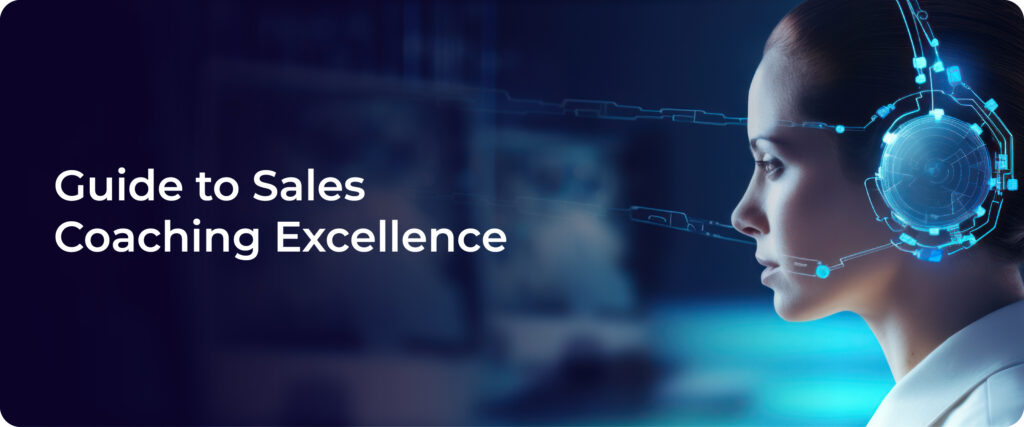As per Forrester’s estimation, US B2B e-commerce will reach 3 million by 2027 and account for 24% of total US B2B sales.
Table of Contents
- What is B2B sales?
- B2B sales vs B2C sales
- What is the B2B sales process?
- How do you measure performance in B2B sales?
- What are the Common Challenges in B2B Sales?
- Some Best Practices for B2B Sales
- B2B Sales Strategies That Work In 2024
- B2B sales tools
- Conclusion
What is B2B Sales?
In simple terms, B2B Sales (Business-to-Business) refers to selling goods or services from one business to another. B2B sales often involve higher-value deals, longer sales cycles, and more decision-makers. Understanding the nuances of B2B sales is crucial for companies looking to build long-term partnerships and generate sustainable revenue.
B2B Sales vs. B2C Sales
Follow the table for the difference between B2B Sales & B2C Sales:
| Differences | B2B Sales | B2C Sales |
Target Audience | Involve selling to other businesses | Focuses on individual consumers |
Sales Cycle & Example | But B2B sales have a longer path to purchase. Examples: lunches, pitches, product demos, and more. | B2C consumers may rely on reviews but they often make quick purchases, especially in retail. Examples: Social channels, affiliates, or ads |
Decision-Making | Rational, based on business needs, ROI, and long-term value. | Emotional, driven by personal desires and preferences. |
| Deal Size | Typically larger and high-value transactions. | Generally smaller, lower-value purchases. |
| Relationship Focus | Relationship-building and personalized service are key. | Often transactional with less emphasis on long-term relationships. |
What is the B2B Sales Process?
The sales process generally follows these stages:
1. Prospecting
- We are identifying potential business clients.
- It involves researching the market, identifying decision-makers, and developing a lead database.
2. Lead Qualification
- We are determining if the lead fits your target audience.
- Assessing whether the prospect has the budget, authority, need, and timeline (BANT) to purchase your product or service.
3. Pitching
- Presenting a tailored solution to the business.
- Reaching out to the prospect through cold calls, emails, or social selling to initiate a conversation.
4. Negotiation
- Discussing terms and closing the deal.
- Engaging in discussions around terms, pricing, and any adjustments to the offer to reach a mutual agreement.
5. Follow-up
- Building relationships post-sale for long-term success.
- Ensuring smooth onboarding, training, and building a strong relationship for potential upselling or long-term collaboration.
This structured approach helps B2B companies maintain a consistent and scalable sales pipeline.
How do you Measure Performance in B2B Sales?
Measuring performance in B2B sales involves tracking key metrics that indicate the effectiveness of your sales strategy and processes. Here are key metrics and methods used to assess performance in B2B sales:
1. Sales Revenue
- Sales Revenue measures the total income generated from B2B sales over a specific period.
- Sales revenue is the most direct indicator of success and growth in sales performance.
2. Sales Cycle Length
- The Sales Cycle Length is average time taken to close a deal, from the first contact to the signed contract.
- A shorter sales cycle typically means greater efficiency, while long cycles may indicate the need for process improvements or better lead qualification.
3. Lead Conversion Rate
- The Lead Conversion Rate is the percentage of leads that are converted into paying customers.
- This metric shows how effective the sales team is at turning prospects into clients, helping businesses assess the quality of their leads and the effectiveness of their sales approach.
4. Customer Lifetime Value (CLV)
- The total revenue a business expects to earn from a customer throughout the entirety of their relationship.
- CLV helps teams understand the long-term value of clients, informing decisions on customer retention strategies and the worth of acquiring specific customers.
5. Customer Acquisition Cost (CAC)
- The cost associated with acquiring a new customer, includes marketing, sales efforts, and overhead.
- Monitoring CAC helps ensure that the cost of gaining new customers doesn’t exceed the revenue they generate.
What are the Common Challenges in B2B Sales?
Here are 5 of the most common challenges in B2B Sales, along with some solutions to overcome them:
1. Complex Decision-Making Process
Challenge
- Multiple stakeholders are involved in decision-making, each with different priorities.
Solution
- Tailor your pitch to address the concerns of each decision-maker. Focus on the specific needs and pain points of each party to build consensus.
2. Long Sales Cycles
Challenge
- B2B sales cycles can be lengthy, leading to delays in closing deals.
Solution
- Use clear timelines and milestone agreements with prospects. Regular follow-ups and nurturing through CRM tools can help maintain momentum.
3. High Competition
Challenge
- The B2B marketplace is often crowded, making it difficult to stand out.
Solution
- Differentiate your offering through value-added services, excellent customer support, and clear communication of your unique selling proposition (USP).
4. Pricing Negotiations
Challenge
- Businesses often have tight budgets, leading to tough price negotiations.
Solution
- Emphasize the ROI and long-term benefits of your product or service. Offer flexible pricing models, such as tiered pricing or payment plans.
5. Maintaining Customer Relationships
Challenge
- After the sale, maintaining strong relationships for repeat business can be challenging.
Solution
- Implement a strong post-sale engagement plan, including regular check-ins, updates, and personalized support to nurture long-term partnership.
Some Best Practices for B2B Sales
Below are some of the best sales tips & practices for some excellent results that can be followed:
1. Research and Understand Your Target Audience
- Invest time in understanding the specific needs, challenges, and decision-making processes of your target businesses.
- It’s important to research and understand as it helps in tailoring pitches more effectively in addressing prospect’s unique problems and building trust.
2. Build Strong Relationships
- Focus on relationship-building, providing long-term value rather than pushing for immediate sales.
- B2B sales are often relationship-driven, and trust can lead to repeat business and referrals.
3. Personalize Your Sales Approach
- Customize your messaging, solutions, and presentations to align with each prospect’s industry, needs, and goals.
- Personalization demonstrates that you understand the prospect’s challenges, increasing the likelihood of engagement.
B2B Sales Strategies That Work In 2024
With the following 6 strategies B2B Sales will work efficiently in 2024:
1. Co-Creation with Clients
Strategy
- Involve your clients in the development or customization of your product/service.
- Collaborate with them to create tailored solutions that directly address their needs.
- Co-creation fosters a sense of ownership and partnership, leading to stronger customer loyalty and higher chances of repeat business.
2. Insight-Led Selling
Strategy
- Provide insights and industry-specific trends to your prospects that they may not have considered.
- Educate them on how these insights can impact their business and how your solution can address emerging challenges.
- Positioning yourself as a thought leader and trusted advisor builds credibility and increases the likelihood of conversions, as prospects see the value beyond just your product.
3. Leverage Micro-Influencers
Strategy
- Collaborate with industry-specific micro-influencers who have a strong following among your target audience. Use them to share case studies, and testimonials, or host webinars featuring your product.
- Micro-influencers have high engagement and credibility within niche communities, which can open new doors for your sales team.
4. Collaborative Selling Across Departments
Strategy
- Engage departments beyond sales, such as product development, customer success, and marketing, to work together on key accounts. For example, product teams can participate in solution demos or customer success can showcase retention strategies.
- This approach demonstrates a well-rounded, customer-centric effort and gives prospects confidence that your entire organization is invested in their success.
5. Reverse RFP (Request for Proposal)
Strategy
- Instead of waiting for clients to issue an RFP, issue your own Reverse RFP where you invite prospects to describe their business problems and how they envision your solution can help.
- This proactive approach sparks conversations and puts you in the driver’s seat of the engagement, helping you gain insight into their needs from the start.
6. Post-Purchase Consulting
Strategy
- Offer free or discounted consulting services after the initial sale to help customers optimize the use of your product or service.
- Providing post-purchase value strengthens client relationships and opens up opportunities for upselling or long-term partnerships.
Top B2B Sales Tools
With complex sales cycles, multiple stakeholders, and data-driven strategies, B2B sales tools have become indispensable for businesses looking to streamline processes, improve customer engagement, and drive revenue growth. Here’s a look at some essential B2B sales tools that are game-changers in 2024.
1. Customer Relationship Management (CRM) Tools
Examples: Salesforce & Zoho CRM
- Purpose: Manage customer interactions, track leads, automate sales tasks, and organize sales pipelines.
- Why It’s Essential: A CRM helps sales teams stay organized, maintain detailed client histories, and improve communication, making it easier to close deals.
2. Sales Engagement Platforms
Examples: Outreach, Salesloft, Groove
- Automate and personalize email sequences, track engagement, and manage follow-ups.
- These tools streamline communication and ensure consistent outreach efforts, helping sales representatives engage with prospects more efficiently.
3. Lead Generation Tools
Examples: LinkedIn Sales Navigator, ZoomInfo, Clearbit
- To find and qualify new leads using detailed data on companies, industries, and decision-makers.
- Thus, these tools help sales teams find high-quality leads, which speeds up the prospecting process and improves targeting accuracy.
4. Sales Analytics and Reporting Tools
Examples: ConvoZen.AI & InsightSquared
- There purpose is to provide data-driven insights into sales performance, pipeline management, and forecasting.
- It is essential for sales analytics tools help teams make informed decisions by identifying trends, bottlenecks, and areas for improvement.
5. Proposal and Contract Management Tools
Examples: PandaDoc, DocuSign, Proposify
- Create, track, and manage sales proposals, contracts, and electronic signatures.
- These tools streamline the proposal and contract process, reducing administrative time and ensuring faster deal closures.
Conclusion
Sales in B2B is a complex and dynamic field, distinct from B2C, and requires tailored strategies and tools to succeed. With the right approach and a focus on building strong, long-term relationships, companies can drive substantial growth in 2024 and beyond.
While B2B businesses face unique challenges, such as managing long sales cycles and complex buyer journeys, solutions like ConvoZen.AI can help by streamlining communication by automating and enhancing communication efforts, improving lead nurturing, and allowing sales teams to focus on building stronger relationships with their clients while increasing efficiency and effectiveness in their strategies.
Click to know more.
Frequently Asked Questions
- What is a B2B sales funnel?
Sales funnel is a model that outlines the stages a business goes through to convert leads into customers, from initial awareness to final purchase and beyond. It helps track and manage the sales process to optimize conversions.
- What is a B2B sales representative?
A B2B sales representative is a professional who sells products or services from one business to another, handling client relationships, negotiating deals, and driving sales growth.
- What is the future of B2B sales?
The future of B2B sales is likely to focus on increased use of digital technologies, data-driven decision-making, personalized customer experiences, and enhanced automation to streamline processes and improve efficiency.


